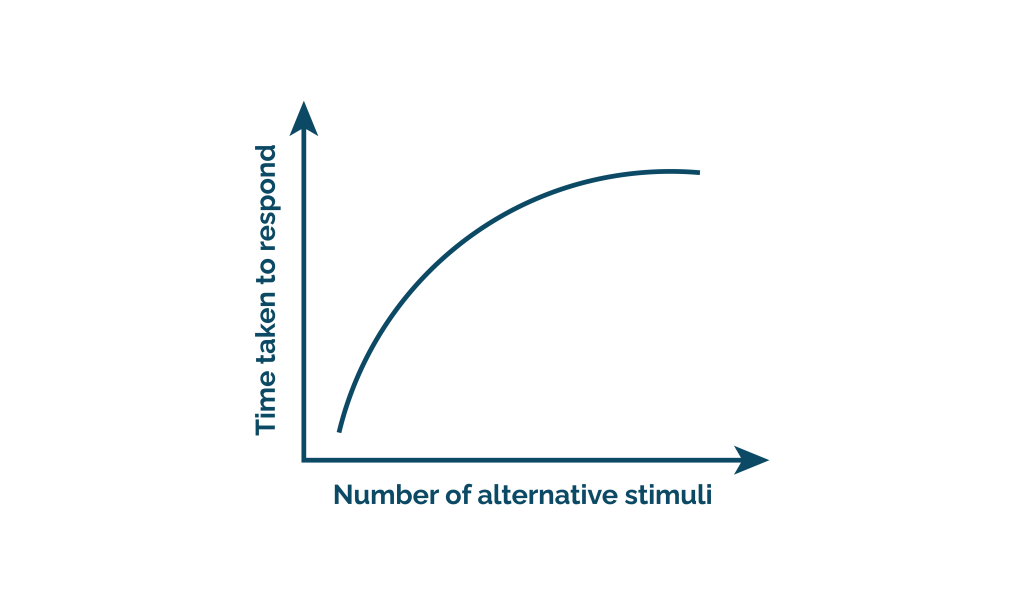Below we’ve listed some of the most common research terms you’re likely to come across in the world of UX design. While you probably already know some, we’re hoping that by discovering some new terms here, you’ll be able to grow as a UX designer.
1. A/B Testing
A/B testing, a common practice in the world of design, is when you test two different versions of an idea, design, or function with users to see which one they prefer.

2. Accessibility
Accessibility refers to the ease with which people can use and understand a piece of software, a design, a website, or an app. This term is also used in relation to how websites and apps are adapted for those with disabilities or special needs. For example, many websites include settings to assist those who are color blind.
3. Active Listening
Active listening is a conversational and interviewing technique where the person pays careful attention to what is being said and provides feedback to encourage the conversation.
4. Analytics
Analytics provide vital information about the traffic and engagement with your website and app. Through analytics, you can understand where your traffic comes from, where they move, and what is/isn’t working with your design.
5. Card Sorting
Card sorting is a technique that enables you to design or evaluate the information architecture of a site. During a card sorting session, participants can organize topics into a variety of categories. They may then label these categories. Then to do a card sort, you can use a number of methods, including cards, pieces of paper, or an online card sorting tool.
6. Clickstream Analysis
From an online perspective, clickstream analysis (or clickstream analytics) is a method of collecting and analyzing data pertaining to the pages a website visitor visits and in what order. A visitor’s path to navigate through a website or online design is called the clickstream.
7. Competitor Analysis
An overall assessment of the strengths and weaknesses of current and potential competitors.
8. Context of Use Analysis
The context of use analysis is about collecting and analyzing information. Most of the time, this information will be centered on intended users, their tasks, the physical environment of the product, tools to support user goals, and the other technical aspects that’ll affect the UX.
The data for a context-of-use analysis can be obtained via surveys, site visits, interviews, workshops, focus groups, and observational studies.
9. Conversion Rate
Conversion rate is whether your users are taking the desired action on your website or design. For e-commerce purposes, the conversion rate provides you with the percentage of visitors that complete a targeted transaction online.
In e-commerce, conversion marketing is the act of converting site visitors into paying customers. The process of improving the conversion rate is called conversion rate optimization.
10. Diary Study
This is a research method that can be used to collect valuable qualitative data about user activity and behavior. Often users self-report their activities at regular intervals to create an account of their activities. Commonly, diary studies can range from a few days to a couple of months.
11. End Users
The end user is the person who uses the website, app, or design.
12. Engagement (User Engagement)
User engagement is about retaining the user’s attention. It also measures whether users find value in the website, app, or design.
13. Entry Field
The entry field (also known as a data or text entry field) is the place where users can enter or modify text.
14. Error Analysis
Error analysis, as part of a broader task analysis, is used to identify the errors that may occur during a set of tasks.
15. Error Rate
Error rate is all about the frequency with which errors occur during a given period of time.
16. Ethnography/Ethnographic Research
Ethnography is the study of people in their own environment via observation, face-to-face interviewing, and other research techniques
17. Eye Tracking
Eye tracking involves the measurement of eye activity on a screen or an environment. The software allows you to track what users are looking at, how frequently, and in what order.
18. Hick’s Law
Hick’s law is about the time it takes for a person to make a decision as a result of the possible choices he or she has. Increasing the number of choices will increase the decision time.

19. Minesweeping
Where are links located on your page? Minesweeping is an action that involves the user quickly moving the cursor over a page and watching to see where the cursor changes to show the presence of a link.
20. Three Click Rule
The 3-click rule is a theory that users will lose interest and quickly leave a website if they can not navigate to the page they want within 3-clicks.
21. Five Second Test
The 5-second test is when you show users the visual interface of a website, design, or software application for 5-seconds. The user must then remember and recall what they saw on the page. This test allows designers to determine whether the key visuals or calls to action are instantly engaging and memorable.
22. Eighty/Twenty Rule
The 80/20 is based on the Pareto principle, which states that 80% of consequences come from 20% of causes. When applied to a website, web app, or software environment, the Pareto principle explains how 20% of the features and functionality will be responsible for 80% of the results.
Summary
As a UX Designer, you are likely to come across many of these terms. If you want to fulfill your responsibilities and achieve as much as possible in your role, you need to know how and when to deploy these terms. Ultimately, staying informed is the easiest path to success in UX design.
To learn more about UX design terms, feel free to get in touch with our UX experts.


